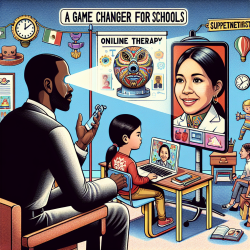Understanding Sedentary Time and Screen Time in Children: Key Insights from the ISCOLE Study
As a practitioner focused on improving children's health outcomes, understanding the factors influencing sedentary behavior and screen time is crucial. The International Study of Childhood Obesity, Lifestyle and the Environment (ISCOLE) provides valuable insights into these behaviors in children aged 9-11 across diverse cultural and socioeconomic backgrounds. This blog post will explore the findings of the ISCOLE study and discuss how practitioners can leverage this data to enhance their practice.
Key Findings from the ISCOLE Study
The ISCOLE study analyzed data from 5,844 children across 12 countries, examining correlates of total sedentary time (SED) and screen time (ST). The study found that children averaged 8.6 hours of daily SED, with 54.2% not meeting ST guidelines. Boys generally reported higher ST and were less likely to meet ST guidelines compared to girls. Common correlates of higher SED and ST included:
- Poor weight status
- Not meeting physical activity guidelines
- Having a TV or computer in the bedroom
These findings suggest that certain environmental and behavioral factors are significant contributors to sedentary behavior and screen time in children.
Implications for Practitioners
Practitioners can use these findings to inform their strategies for reducing sedentary behavior and screen time in children. Here are some practical steps:
- Encourage Physical Activity: Promote activities that align with physical activity guidelines. Encourage children to engage in at least 60 minutes of moderate to vigorous physical activity daily.
- Modify Home Environment: Advise parents to remove TVs and computers from children's bedrooms to reduce screen time.
- Promote Healthy Eating Patterns: Educate families on the importance of healthy eating patterns and how they correlate with reduced sedentary behavior.
By addressing these factors, practitioners can help reduce sedentary behavior and screen time, leading to improved health outcomes for children.
Encouraging Further Research
The ISCOLE study highlights the need for ongoing research to better understand the complex interactions between sedentary behavior, screen time, and children's health. Practitioners are encouraged to stay informed about new research findings and consider participating in studies that explore these areas further.
To read the original research paper, please follow this link: Correlates of Total Sedentary Time and Screen Time in 9–11 Year-Old Children around the World: The International Study of Childhood Obesity, Lifestyle and the Environment.










